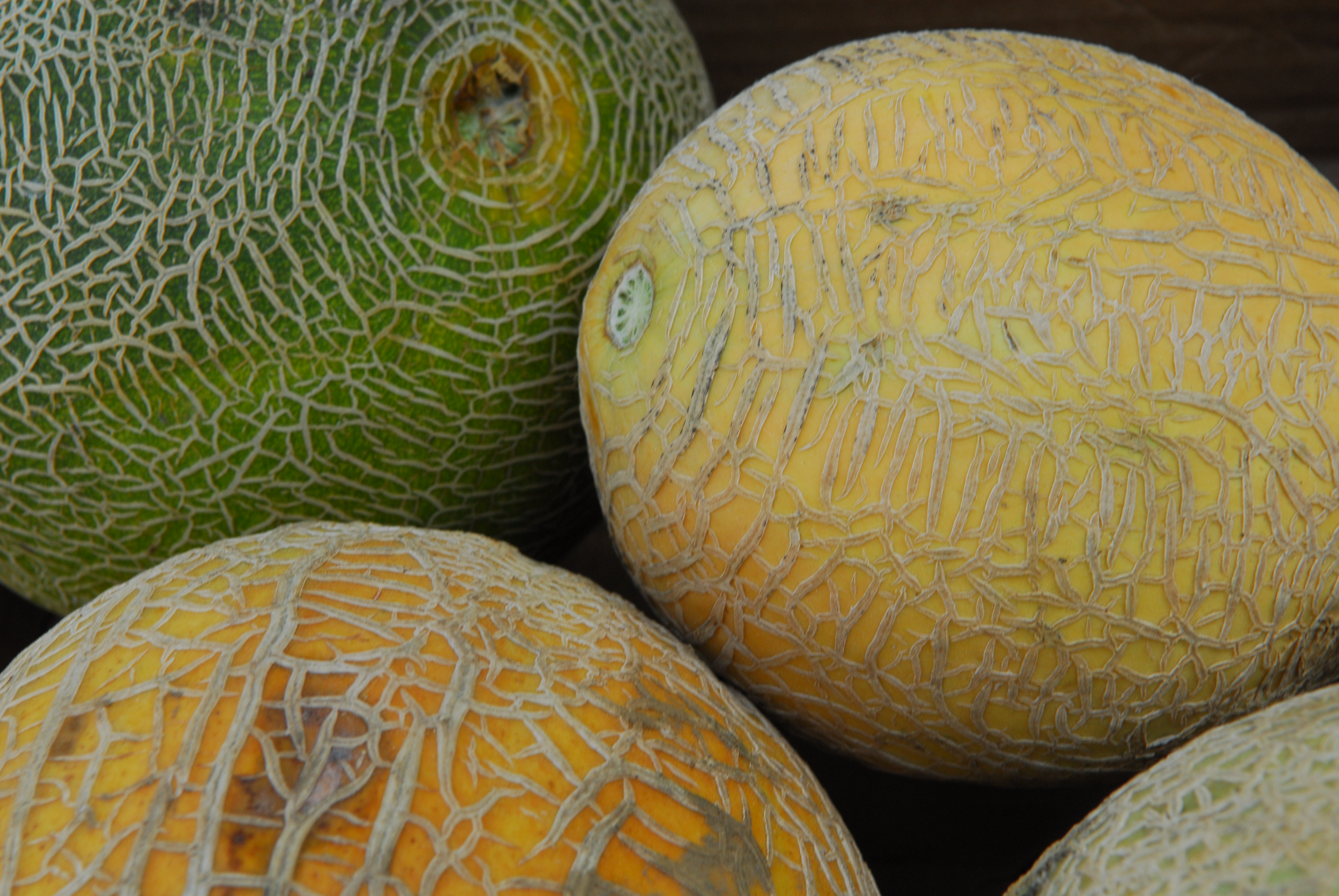Muskmelon Recipes & Info
Discover | Muskmelons, cucumbers, pumpkins and winter squash are surprisingly all in the same gourd family, but only muskmelons are prepared as a fruit. Muskmelons are more commonly known as cantaloupes, honeydews or casaba melons throughout the country. But, here in Michigan, they are known as honeyrocks or howell Melons. And, according to Michiganders, they are the sweetest, juiciest varieties available.
Taste | Muskmelons are large, hard-skinned fruits with sweet, juicy flesh and large seeds. A ripe muskmelon should smell fruity or musky and give slightly at the stem to gentle pressure. Sweet melons taste great with salty tang, such as melon wrapped in prosciutto. Muskmelon is also the perfect dessert as a sorbet or ice cream.
Fortify | Melons allow us to consume a palette of nutrients. Each color represents a different health benefit—yellow and orange melons support heart and immune health, while green melons promote strong bones and teeth. Substances called phytochemicals that occur naturally in melons work with vitamins, minerals and fiber to promote well-being and lower disease risk.
Preserve | Choose ripe melons with cream- or golden-colored rinds without soft spots or lumps. Unripe muskmelons do not become sweeter after picking, but will become juicier when left out at room tempera-ture. Prepare melons by cutting in half, scooping out the seeds and cutting away the skin. Store cut melon in the refrigerator in a sealed container for up to five days. Freeze cut-up muskmelon for up to eight months in a freezer-safe container.








